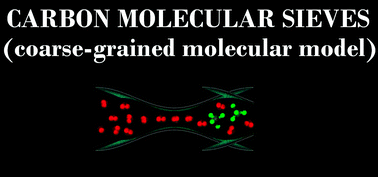Microscopic model of carbonaceous nanoporous molecular sieves—anomalous transport in molecularly confined spaces†
Abstract
To model the equilibrium and

* Corresponding authors
a Applied Physics, RMIT University, GPO Box 2476V, Victoria 3001, Australia
b
Department of Chemistry, Physicochemistry of Carbon Materials Research Group, N. Copernicus University, Gagarin St. 7, 87-100 Torun, Poland
E-mail:
piotr.kowalczyk@rmit.edu.au
Fax: +61 (03) 99255290
Tel: +61 (03) 99252571
To model the equilibrium and

 Please wait while we load your content...
Something went wrong. Try again?
Please wait while we load your content...
Something went wrong. Try again?
P. Kowalczyk, P. A. Gauden, A. P. Terzyk and S. Furmaniak, Phys. Chem. Chem. Phys., 2010, 12, 11351 DOI: 10.1039/B926206G
To request permission to reproduce material from this article, please go to the Copyright Clearance Center request page.
If you are an author contributing to an RSC publication, you do not need to request permission provided correct acknowledgement is given.
If you are the author of this article, you do not need to request permission to reproduce figures and diagrams provided correct acknowledgement is given. If you want to reproduce the whole article in a third-party publication (excluding your thesis/dissertation for which permission is not required) please go to the Copyright Clearance Center request page.
Read more about how to correctly acknowledge RSC content.
 Fetching data from CrossRef.
Fetching data from CrossRef.
This may take some time to load.
Loading related content
